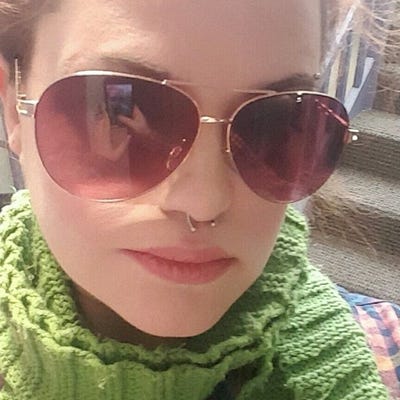6 lessons from the making of Zoo Tycoon
This colorful retelling by Hank Howie dives into some core business lessons for developers.

The making of Zoo Tycoon is a story colorfully told by its co-producer, the “games evangelist” Hank Howie. At GDC 2023, Howie, who was president and co-founder of Blue Fang Games, shared some historic anecdotes about the game’s development, revealing not only a humorous behind the scenes look at how Zoo Tycoon came together, but also some key lessons to takeaway.
The first game Howie ever shipped was the ill-fated Riders of Rohan in 1991, along with Adam Levesque, who later moved on to Papyrus Design Group. When Levesque eventually left that company, fortuitously selling his stock right before their publisher Sierra On-Line was sold, he and Howie reconnected, leading to the formation of Blue Fang Games in 1998.
Their first game, Dragon Hoard, was conceived as an RPG flight sim strategy game, an ambitious effort that ultimately was not picked up by a publisher. At that point, due to Levesque’s previous work with Papyrus, they had some contacts over at Hasbro, who were mostly making racing games at the time. It was while they were working on one of these titles that the team played and were deeply inspired by Roller Coaster Tycoon, to the extent that they wanted to create one of their own.
“Airports are not fucking fun.”
The first idea for a Tycoon game was actually Airport Tycoon, which Hank Howie disliked and immediately pushed back on. But in a later meeting with their engineer Brian Shea, who was trying to convince him to come on board, Shea casually suggested Zoo Tycoon, which immediately seemed to bear more potential. But how to get the idea to take hold when John Wheeler, their engineer and a key team member, was so attached to Airport Tycoon? The solution: make it seem like it was his idea. “I said, 'Okay, so here's what we're gonna do. I'm gonna tell John to go to your office tomorrow and pitch this Airport Tycoon idea to you, and then you do what you do.' And he says, 'Okay.' So next day, I told John before I left, ‘Go talk to Brian and run it by Brian, because Brian is pretty good at this stuff’. Next day, I'm sitting in my office and John comes running in. ‘You won't believe this. Won't believe it! Guess what Brian said?’ I said ‘What?’ He goes, 'Zoo Tycoon.' I said ‘John, that is a great idea. That is a great idea. That's fantastic. I love it.’”
Lesson: “It is amazing what you can accomplish if you do not care who gets the credit.”—Harry Truman
From there, they built a 10-page pitch proposal for GDC 2000. This was shared with Hasbro, EA, Ubisoft, but most importantly Microsoft, who had just launched a division called LIFE Games. “I think it stood for Leisure and Interactive Family Entertainment. Whatever.” To their great advantage, Microsoft was actually in the market for a zoo-themed game at the time, having white-boarded the idea before the team even pitched. To start the process, they met with Shane Kim and Bonnie Ross at GDC and got to work, pitching the game to the LIFE team as the company did their due diligence. The budget they settled on was most unusual. “I have this thing about numbers,” Howie says. “Never give somebody a round number. If you give somebody a round number, they just think you plugged it, right? So I always give esoteric numbers, like you know, 1.937 million dollars to make this game.”
Next steps and wrangling animals
In late 2000-early 2001, Howie had asked around the design team and found that many people felt that a major feature of the game should be the ability of zoo animals, through player error, to attack the guests. The one person who wasn’t on board was Adam, who was also their co-founder, lead designer, and producer. His argument was that animal attacks don’t happen at zoos in real life but as Howie puts it, “Well, we know it actually does happen in real life, because there's always some [buffoon] who tries to go into the pen with the polar bear. Goodbye.”
The rest of the team just “knew” it had to happen, so, despite Microsoft’s reluctance to creatively interfere, Howie called their producer Charlie Peterson to intervene. “I said, ‘Charlie, I need your help…Do you think animals should attack the guests?’ He goes, ‘Oh, yeah’. ‘How about everybody else a Microsoft?’ He goes, ‘Oh, yeah’. ‘Well, then you got to fucking help me because we got to get Adam to buy in.’” At this point, Microsoft had done some playtesting and focus testing, which they then used on a call with Levesque to persuade them. “I think Charlie fudged the data,” Howie laughs. But it worked. Levesque agreed, provided the feature would be funny and not gory. “Eventually, we got there. Much to everyone’s delight!”
Lesson: if you have the ability to influence the decision, under the issues involved, know where the team stands, and that there’s a better decision (data's best), then figure out how to get it there.
Another challenge arose that year during playtesting. “We're playing the game all the time. That's something I would always say, you know, you have to play the game. You have to play the game. I don't care if you're sick of it, you have to play again.” And it was then that they realized the game didn’t have a good feedback system and did not have a way of telling players whether what they were doing was good or bad. So, Howie assembled the team and held a meeting, trying to explain to Levesque that the game was not fun in its current state because it lacked challenges. At one point, after some back and forth, a key team member retorted, “Well Adam, I don't think the challenge should be the interface of the game,” a comment that “did not go over well.” In anger, Levesque responded, “Goddamnit, what do you want me to do? When you do something good, use a smiley face, and when you don’t, use a frowny face?”
“And we all just stopped. ‘Well yeah, let’s try that!’”
Lesson: we’d never have solved the problem if we’d said: “That’s game design’s problem,” As the adage goes, great ideas can come from anywhere and anyone. Give everyone a voice. It’s the team’s game.
One of the stories Howie told had to do with volunteering your work, even in situations you might feel qualified. At one point, Levesque had everything blocked out for the game’s tutorial but needed “words,” the text that would accompany the mode so that players would know what they were doing. Howie volunteered to “put in some words,” using his signature wise-ass sense of humor to walk the players through the game’s rules and features. Microsoft enjoyed it and thought it was funny, and that sense of humor has remained a memorable feature even years later.
Lesson: if you‘re asked to help, help. You may just surprise yourself and others with the value you add.
“When did I know the game was ready?” Howie asks. When he lost all sense of time while playing. A good game is one that you can get so caught up in that hours can go by without you realizing it. “Ah, we got it!” he says.
Lesson: “When you hit that “time warp” effect, [you've got it].
This lesson is likely a little less applicable to much of game development, but Howie tells a story of their first milestone payment, 6 months post-launch. He was actually on vacation with his family at the time and took a call to find out the company was getting an additional 2 million. The money came as a surprise, but Howie was less reluctant than his coworkers to simply cash in their good fortune. When Levesque, perhaps in shock, called to tell him the good news, he asked, “What should I do with it?” A pragmatic Howie replied, “Deposit it!”
Lesson: Do what’s right for your game, and it just may do right by you.
Howie wrapped up the talk by breaking down what the team did right and wrong, along with a few more bonus tips. Some of the pointers chalk up to pure luck or the good fortune of having a traditional publishing agreement. Nonetheless:
What we did right:
We figured out the game we wanted to make, and it was a hit.
We found the right publisher for us and the game.
We knew our target audience: everyone.
We shipped the game we wanted, on time and on budget.
We played our own game, always and often.
We built a very fine company, with tons of great, talented people, and we had a great time doing it.
What we have done better:
Microsoft owned all IP and marketing rights, but we should have leveraged our success better.
Should have focused more on our website (especially later, when you could have a decent website) and tried to service and capture our customers better.
Should have invested more in building our brand with consumers.
Turns out the PC was NOT dead.
Should never have bet on the Nintendo Wii as a 3rd party (it’s a really hard go. They would not have gone with Wii in retrospect, Howie says. The platform was just “designed and built for something else.”)
Bonus tips:
If there are two founders, try to never go 50/50. Someone has to break the tie!
Timing in life is everything. You can have a great idea and execute it well, and if the marketing timing is bad, it just won’t work.
Just because you may have had a successful financial result, you still might not know everything. “Some people don’t quite get this.”
Do not undervalue business strategy and development. But, Howie says, that won’t carry the day. “You need game dev talent.”
Read more about:
FeaturesAbout the Author(s)
You May Also Like







.jpeg?width=700&auto=webp&quality=80&disable=upscale)








